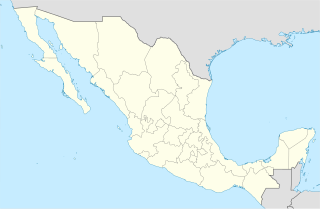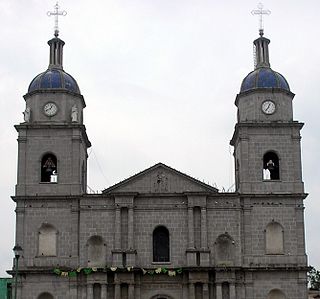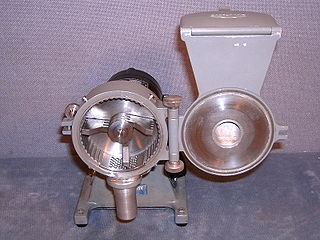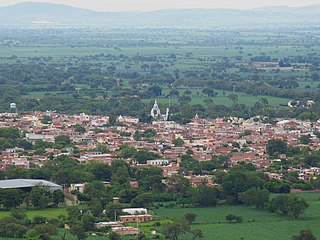
Tamazula de Gordiano is a city in the Mexican state of Jalisco. The word "tamazula" comes from the Nahuatl word tamazullan, which means "place or lagoon of toads."

San Jerónimo is a locality and municipal agency of San Martín de Hidalgo Municipality, Jalisco, Mexico. As of the 2010 census, the village had a total population of 355, making it the eleventh-largest locality in the municipality and the second-largest in the territorial sub-committee.

Tuxpan is a town and municipality in the Mexican state of Jalisco. The name "Tuxpan" comes from the Nahuatl word tochpan, a word used to describe where rabbits live or possibly place of abundant rabbits. Some others translate it as a location above the river.

The Tequila Express is a Mexican regional train service that operates from Guadalajara, Jalisco, to the Tequila Herradura distillery at the San José del Refugio Hacienda in the municipality of Amatitán, Jalisco. Amatitán is approximately 40 kilometres (25 mi) northwest of Guadalajara and 32 kilometres (20 mi) southeast of the town of Tequila, Jalisco. The train service is so named because it features tequila tastings and transports its passengers through blue agave fields to the distillery in Amatitán and towards the town of Tequila.
Las Minas Creek is one of the main tributaries of the San Martín River in southwestern San Martín de Hidalgo municipality in the Mexican state of Jalisco.

Ipazoltic is a town in the municipality of San Martín de Hidalgo in the Mexican state of Jalisco. It is known for the lime mines it had, those of which produced the constructional material for the government buildings in Guadalajara.
El Cobre is a rural town in the municipality of San Martín de Hidalgo in the Mexican state of Jalisco. The town is in between the towns of Lagunillas and Mesa del Cobre, in Sierra de Quila, Jalisco's second-largest forest reserve.
El Crucero de Santa María is a town in the municipality of San Martín de Hidalgo in the state of Jalisco, Mexico. It has a population of 3,228 inhabitants.
El Tepehuaje de Morelos is a town in the municipality of San Martín de Hidalgo in the state of Jalisco, Mexico. It has a population of 2,163 inhabitants. The town was named after Mexican independence insurgent José María Morelos.
Camajapita is a town in the municipality of San Martín de Hidalgo in the state of Jalisco, Mexico. It has a population of 280 inhabitants. The town takes its name after the adjacent town of Camajapa, which lies on the municipality of Cocula, Jalisco.
Labor de Medina is a town in the municipality of San Martín de Hidalgo in the state of Jalisco, Mexico. It has a population of 863 inhabitants.
Los Vergara is a town in the municipality of San Martín de Hidalgo in the state of Jalisco, Mexico. It has a population of 269 inhabitants.
San Isidro Palo Verde is a town in the municipality of San Martín de Hidalgo in the state of Jalisco, Mexico. It has a population of 341 inhabitants.
Santa Rosa del Jilguero is a town in the municipality of San Martín de Hidalgo in the state of Jalisco, Mexico. It has a population of 47 inhabitants.
San Jacintito, also known as El Ranchito, is a town in the municipality of San Martín de Hidalgo in the state of Jalisco, Mexico. It has a population of 119 inhabitants.
San Jacinto is a town in the municipality of San Martín de Hidalgo in the state of Jalisco, Mexico. It has a population of 227 inhabitants. It is located on the foothils of the Sierra Madre Oxidental mountain chain.
Ojo de Agua Dam is a dam located southeast of the town of El Tepehuaje de Morelos, Jalisco, Mexico. It is the apparently largest dam in the municipality of San Martín de Hidalgo.

San Miguel Chapultepec is a colonia or neighborhood in Delegación Miguel Hidalgo in Mexico City.

The St. Joseph Cathedral Also Ciudad Guzmán Cathedral It is a Catholic cathedral in Mexico that serves as the mother church of the Roman Catholic Diocese of Ciudad Guzmán and the seat of its bishop. Built at the end of the 19th century, it was completed around 1900.











